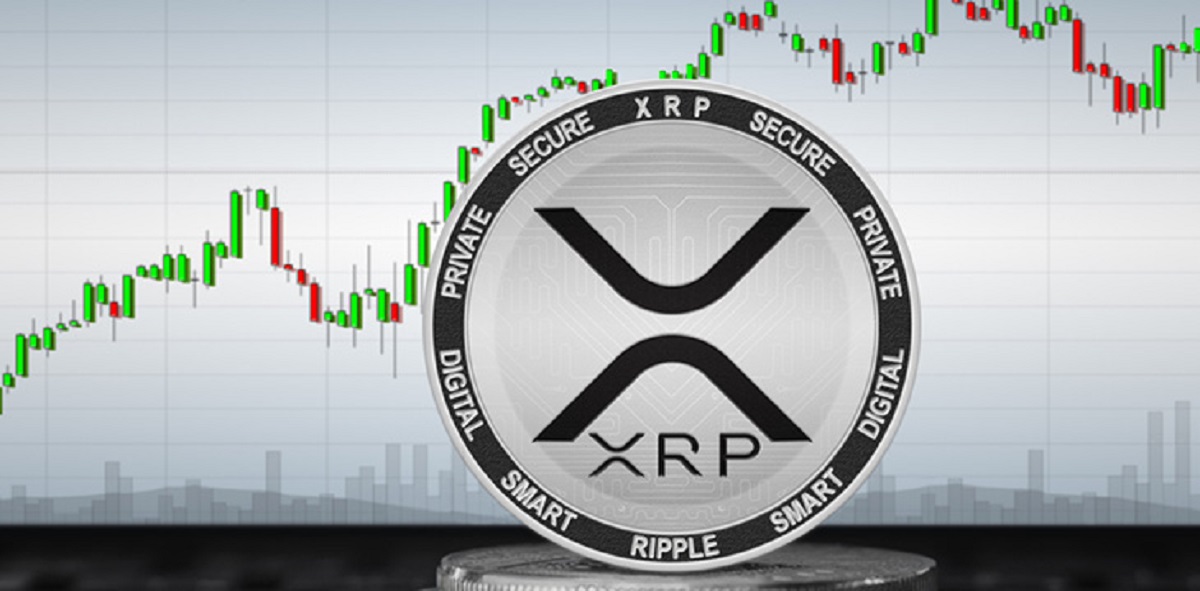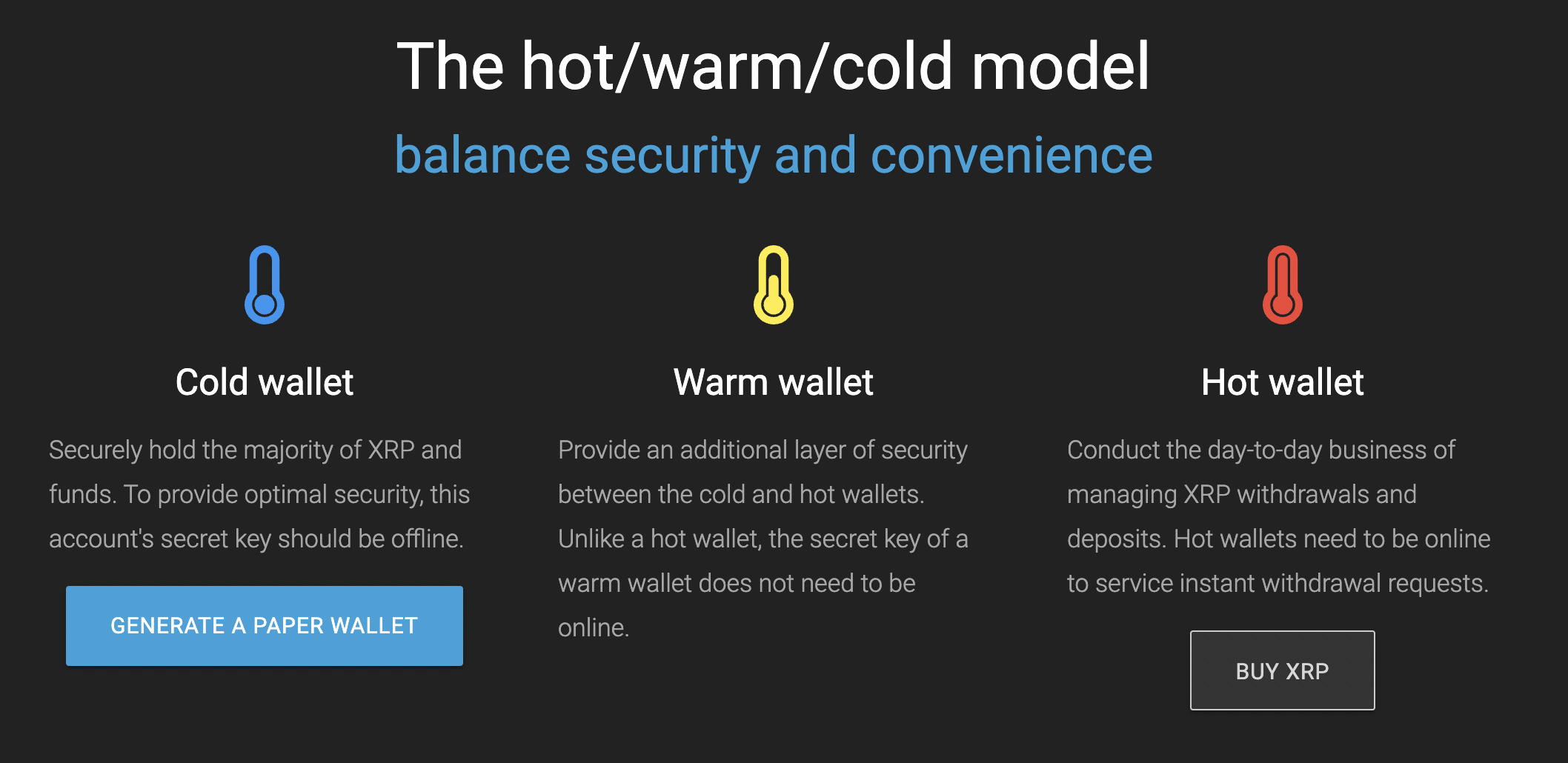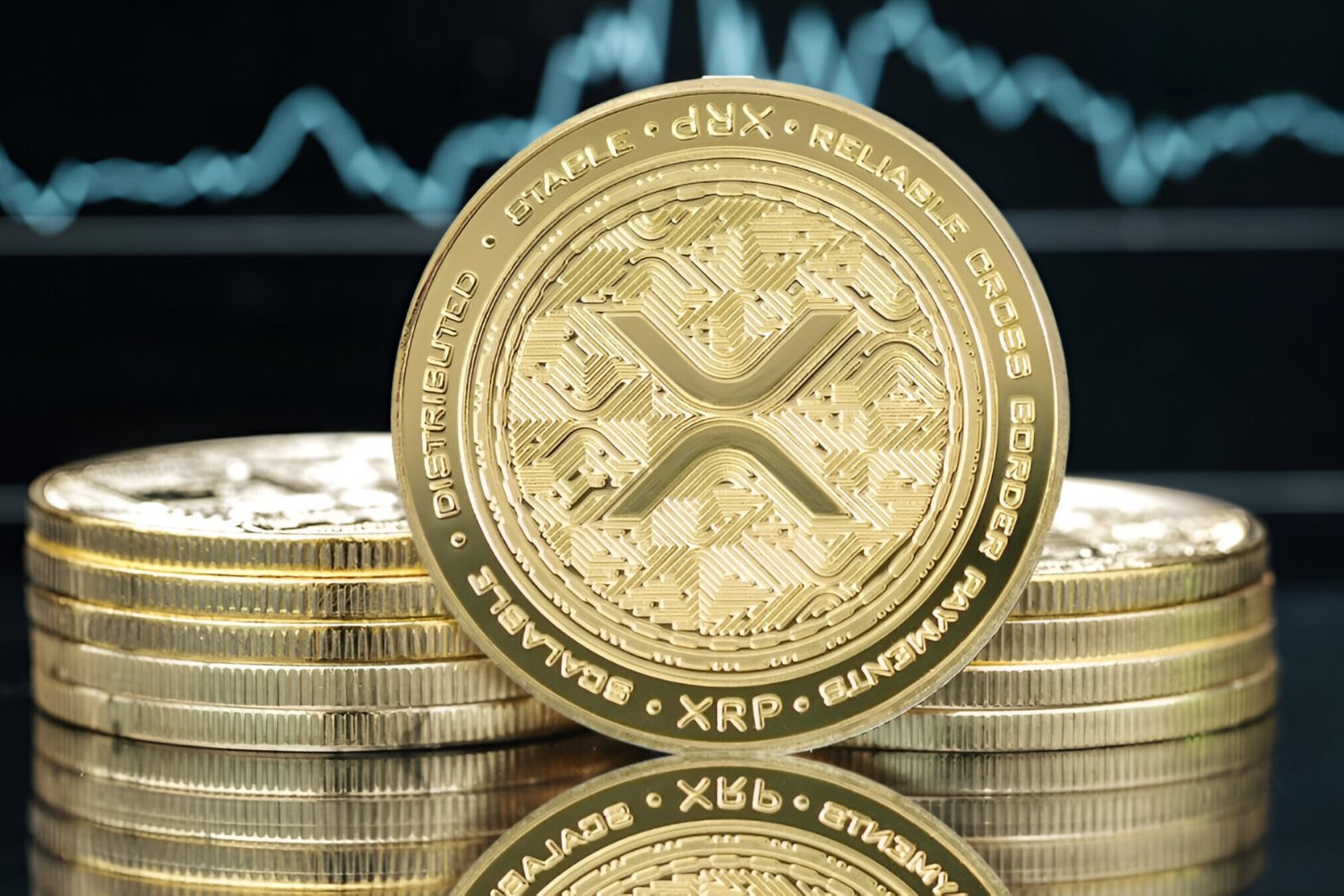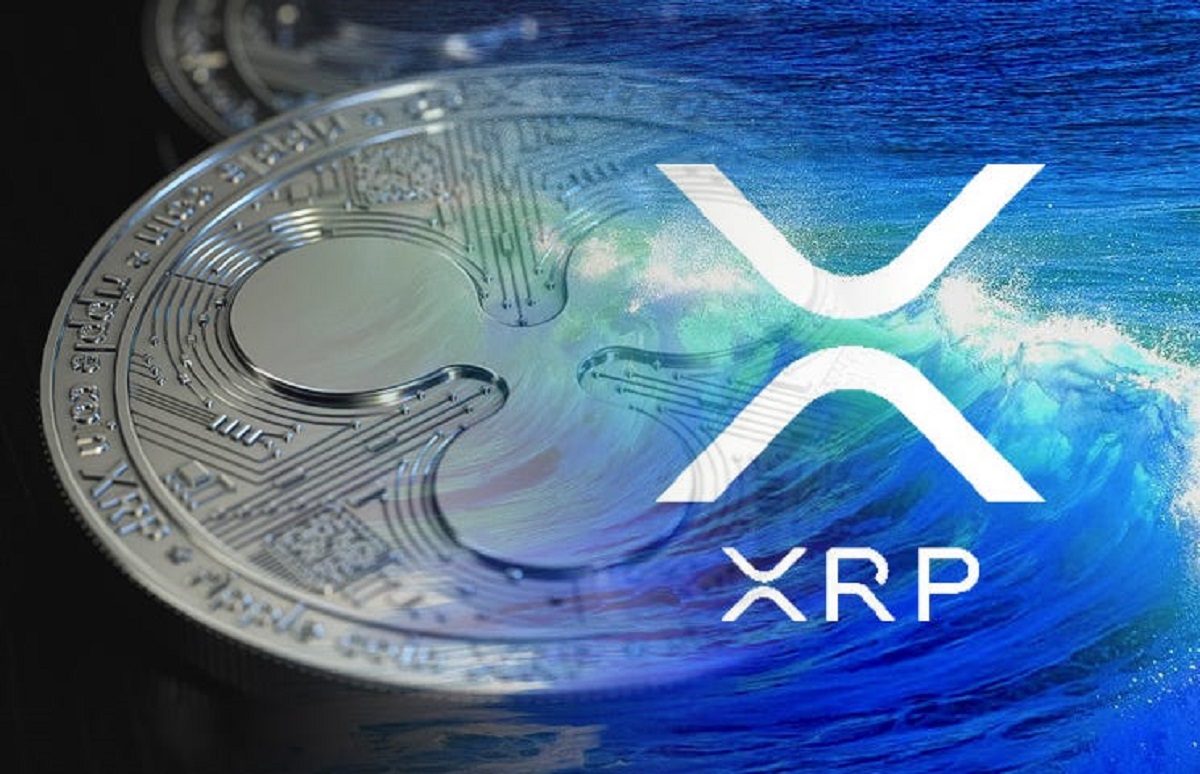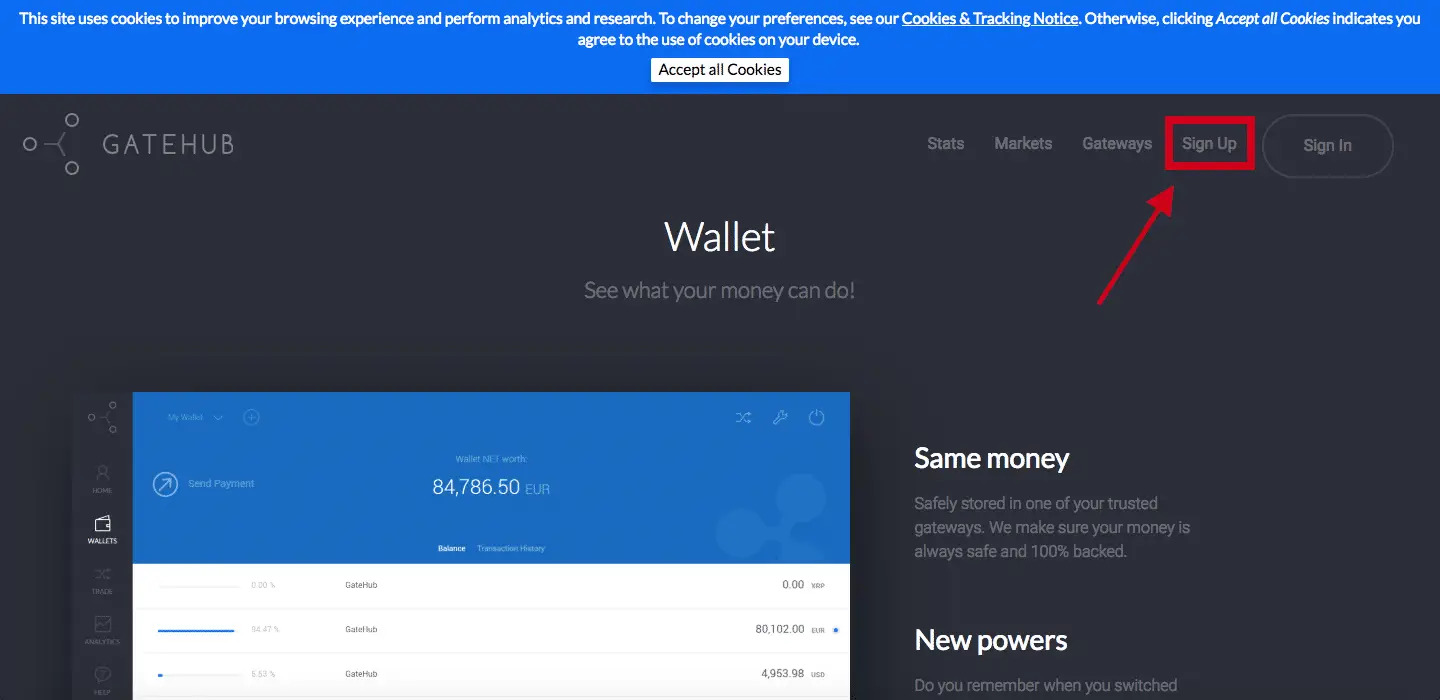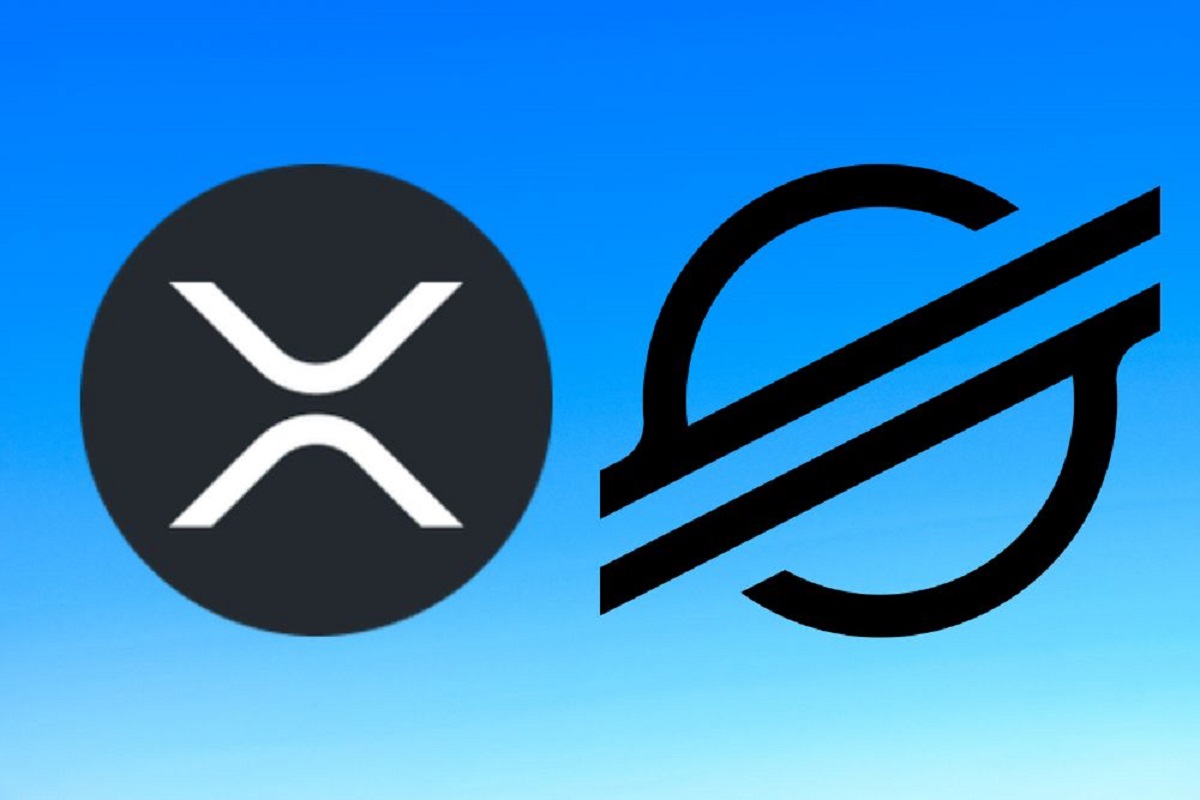Introduction
As the world of cryptocurrencies continues to evolve, one question that stands out is whether XRP, the digital asset associated with Ripple Labs, can be classified as a security. The answer to this question has significant implications not only for Ripple and its investors but also for the overall crypto industry.
With a market capitalization in the billions of dollars and a prominent role in the digital payment space, XRP has attracted the attention of regulators, including the U.S. Securities and Exchange Commission (SEC). The SEC’s classification of XRP as a security would mean that Ripple Labs should have registered it with the commission and complied with the necessary regulatory requirements. This designation would also have far-reaching consequences for other cryptocurrencies and their issuers.
In this article, we will delve into the complex issue of whether XRP should be considered a security under U.S. law. We will examine the famous Howey Test, which helps determine whether an asset qualifies as a security, and analyze whether XRP meets the criteria set forth by this test. Additionally, we will explore Ripple’s perspective on XRP’s status and the ongoing legal battle between Ripple Labs and the SEC.
It’s important to note that the outcome of this debate extends beyond Ripple and XRP. If XRP is ultimately deemed a security, it could set a precedent for how other cryptocurrencies are regulated in the United States. This could have a profound impact on companies and individuals involved in the crypto industry, potentially leading to increased scrutiny, additional compliance measures, and a reevaluation of the legal status of various digital assets.
Join us on this journey to explore the intricacies of the XRP security debate and its potential implications for the future of cryptocurrencies.
Background on XRP
XRP is a digital asset that was created by Ripple Labs in 2012. Ripple Labs is a San Francisco-based technology company that aims to revolutionize cross-border payments and improve the efficiency of global money transfers. XRP serves as both a decentralized cryptocurrency and a bridge currency for facilitating transactions between different fiat currencies.
Ripple’s network, known as the RippleNet, utilizes XRP as a liquidity tool to facilitate real-time money transfers across borders. By leveraging blockchain technology, Ripple aims to provide faster, cheaper, and more secure payment solutions compared to traditional banking systems.
One of the distinguishing features of XRP is its consensus algorithm, known as the XRP Ledger. Unlike Bitcoin’s proof-of-work algorithm, which requires miners to validate transactions, XRP relies on a consensus protocol that allows for faster transaction settlement times and lower energy consumption.
Over the years, XRP has gained recognition and adoption within the financial industry. The digital asset has been integrated into various payment platforms, remittance services, and banks around the world. Its widespread use and partnership with financial institutions have propelled XRP into one of the top cryptocurrencies in terms of market capitalization.
However, despite its growing popularity, XRP has faced scrutiny regarding its legal status. While many cryptocurrencies, such as Bitcoin and Ethereum, have been deemed commodities by regulatory bodies, the classification of XRP remains uncertain. This uncertainty has led to a legal battle between Ripple Labs, as the issuer of XRP, and the U.S. Securities and Exchange Commission (SEC).
The SEC alleges that Ripple Labs conducted an unregistered securities offering by selling XRP to investors. According to the SEC, XRP meets the definition of a security under U.S. federal securities laws. Ripple Labs, on the other hand, argues that XRP is a digital asset and does not meet the criteria of a security.
This disagreement has sparked a broader debate about the legal framework surrounding cryptocurrencies and the jurisdiction of regulatory authorities. The outcome of the Ripple-SEC lawsuit could have far-reaching implications not only for XRP and Ripple Labs but also for the wider crypto industry.
The Howey Test
The Howey Test is a legal framework established by the U.S. Supreme Court in 1946 to determine whether certain transactions qualify as investment contracts, and therefore as securities, under federal securities laws. The test derives its name from the landmark case of SEC v. Howey, which involved an investment scheme related to citrus groves.
The Howey Test consists of four key elements that need to be satisfied to classify an arrangement as a security:
- Investment of Money: The first criterion considers whether an individual invests money in a common enterprise. In the context of cryptocurrencies, this involves the purchase or acquisition of digital assets, such as XRP, in exchange for money or other forms of value.
- Expectation of Profits: The second element determines whether investors have a reasonable expectation of earning profits from their investment. This can include the potential for price appreciation, dividends, or other financial benefits.
- Common Enterprise: The third component examines whether the fortunes of investors are linked to those of the issuer or a third party. It focuses on whether the success or failure of the investment hinges on the efforts of others, such as the management team or promoters.
- Efforts of Others: The final element evaluates the degree to which the profits from the investment are derived from the efforts of someone other than the investor. If the success of the venture depends primarily on the efforts of a central entity or group, it suggests the presence of a security investment.
When applied to the case of XRP, the Howey Test raises questions about the nature of the digital asset and the involvement of Ripple Labs. Critics argue that XRP meets the criteria of an investment contract under the Howey Test, as investors are relying on the efforts of Ripple Labs to increase the value of XRP and generate profits.
On the other hand, Ripple Labs contends that XRP functions as a digital currency and should not be considered a security. They argue that XRP’s primary purpose is as a medium of exchange and a liquidity tool within the RippleNet network, rather than as an investment vehicle.
It is important to note that the classification of XRP as a security or not under the Howey Test is a complex and debated topic. The outcome of the ongoing Ripple-SEC lawsuit will likely have a significant impact on how the Howey Test is interpreted within the context of cryptocurrencies and the broader digital asset market.
XRP’s Status as a Security
The question of whether XRP should be classified as a security is a subject of intense debate and legal scrutiny. The determination of XRP’s status as a security has important implications for Ripple Labs, XRP investors, and the overall crypto industry.
The U.S. Securities and Exchange Commission (SEC) alleges that XRP meets the definition of a security under U.S. federal securities laws. The SEC argues that XRP represents an investment contract, as investors have purchased XRP with the expectation of earning profits from its future value appreciation.
Ripple Labs, on the other hand, contends that XRP is a digital asset and should not be classified as a security. They argue that XRP functions as a utility token, facilitating transactions on the RippleNet network and serving as a bridge currency for cross-border payments. According to Ripple Labs, XRP is not an investment vehicle, and its primary purpose is to enable efficient and cost-effective transactions.
The SEC takes the position that the economic realities and the manner in which XRP was marketed and sold make it more akin to a security. They claim that Ripple Labs extensively promoted and sold XRP as an investment opportunity, attracting investors with the potential for significant profits.
In assessing XRP’s status as a security, the courts will likely consider various factors, including the economic reality of the transaction, the marketing efforts of Ripple Labs, and the expectations of XRP investors. The outcome of this legal battle will set an important precedent for the classification of digital assets, potentially influencing the regulatory treatment of other cryptocurrencies.
It’s worth noting that the debate around the status of XRP has far-reaching implications. If XRP is deemed a security by the courts, Ripple Labs may be required to comply with federal securities laws, including registering XRP as a security and providing detailed disclosures to investors. This would significantly impact the operations and future plans of Ripple Labs, as well as the value and market accessibility of XRP.
On the other hand, if the courts side with Ripple Labs and conclude that XRP is not a security, it could provide clarity and reassurance to other cryptocurrency projects navigating regulatory uncertainties. It could affirm the notion that not all digital assets should be categorized as securities, creating a more favorable environment for innovation and the development of blockchain-based technologies.
The final determination of XRP’s status as a security will depend on how the courts interpret the facts, the arguments presented, and the application of existing securities laws to the unique characteristics of XRP. Until then, the crypto industry, Ripple Labs, and XRP investors will continue to closely monitor this crucial legal battle.
Ripple’s Perspective on XRP
Ripple Labs, the company behind XRP, has consistently maintained the position that XRP should not be classified as a security. Ripple’s perspective on XRP’s status is crucial to understanding the company’s business model and its approach to the ongoing legal battle with the U.S. Securities and Exchange Commission (SEC).
Ripple Labs argues that XRP is a digital asset with utility value rather than a security. They emphasize that XRP’s primary function is to serve as a liquidity tool and bridge currency for facilitating fast, cost-efficient cross-border transactions on the RippleNet network. According to Ripple, XRP was designed to improve the efficiency of the global payment system and provide a vital solution for financial institutions.
Ripple Labs asserts that XRP’s purpose as a medium of exchange differentiates it from traditional securities. They highlight the fact that XRP transactions do not involve the promise of future profits or ownership rights in Ripple Labs. Instead, XRP facilitates instant value transfer between different fiat currencies, enabling seamless global money transfers without the need for traditional intermediaries.
Another important aspect of Ripple’s perspective is its commitment to regulatory compliance. Ripple Labs has consistently cooperated with regulatory bodies and has implemented robust measures to ensure compliance with existing financial regulations. The company has obtained licenses and pursued partnerships with regulated financial institutions, demonstrating its commitment to operating within the framework of existing laws.
Ripple Labs also emphasizes the global use and adoption of XRP as a digital asset. They highlight the fact that XRP has been integrated into various payment platforms, remittance services, and banks around the world. According to Ripple, XRP’s widespread adoption and utility value demonstrate its suitability as a digital asset rather than a security.
However, Ripple Labs’ perspective on XRP is disputed by the U.S. Securities and Exchange Commission. The SEC alleges that Ripple Labs conducted an unregistered securities offering through the sale of XRP. The SEC contends that Ripple Labs marketed and sold XRP as an investment opportunity, attracting investors with the promise of potential profits from XRP’s future value appreciation.
As the legal battle between Ripple Labs and the SEC continues, the courts will ultimately determine whether Ripple’s perspective on XRP’s status as a utility token is valid. The outcome of this lawsuit will undoubtedly play a significant role in shaping the regulatory landscape for digital assets, as well as the future of Ripple Labs and its involvement in the crypto industry.
SEC’s Views on Cryptocurrencies
The U.S. Securities and Exchange Commission (SEC) has been actively involved in shaping the regulatory landscape for cryptocurrencies. The SEC’s views on cryptocurrencies, including their classification and regulatory oversight, are essential in understanding the agency’s approach to enforcing securities laws in the rapidly evolving crypto industry.
The SEC has consistently emphasized that the Howey Test, established by the U.S. Supreme Court, is a key factor in determining whether a digital asset qualifies as a security. According to the SEC, if a digital asset meets the definition of an investment contract under the Howey Test, it should be regulated as a security, subject to registration requirements and other obligations.
In a speech by SEC Chairman Jay Clayton, he highlighted the importance of investor protection when it comes to cryptocurrencies. The SEC’s primary concern is to ensure that investors are not being subject to fraudulent schemes or unregistered securities offerings in the crypto space. The SEC aims to provide clarity and transparency to investors and market participants while fostering innovation and capital formation.
The SEC has issued numerous investor alerts and guidance documents to educate the public about the risks associated with investing in cryptocurrencies. These alerts warn about potential scams, Ponzi schemes, and market manipulation in the crypto market. The SEC encourages investors to conduct thorough research, exercise caution, and seek advice from financial professionals before investing in digital assets.
Furthermore, the SEC has taken enforcement actions against companies and individuals for allegedly conducting illegal securities offerings through initial coin offerings (ICOs) or unregistered securities exchanges. The SEC has emphasized that it will pursue those who violate securities laws, especially in cases where digital assets are deemed to be securities.
Despite the SEC’s robust stance on enforcing securities laws, the agency has also expressed an openness to innovation in the crypto space. SEC Commissioner Hester Peirce, for instance, has advocated for a “safe harbor” approach, which would provide temporary relief from certain securities regulations for blockchain projects. This approach aims to foster innovation and offer a regulatory framework that accommodates the unique characteristics of cryptocurrencies.
It’s important to note that the SEC’s views and regulatory approach continue to evolve as the crypto industry matures and new challenges emerge. The agency actively engages with market participants, solicits public input, and considers feedback when formulating policies and regulations related to cryptocurrencies and blockchain technology.
By closely monitoring the SEC’s stance on cryptocurrencies, market participants can gain insights into the agency’s priorities and enforcement activities. Understanding the SEC’s views on digital assets is crucial for businesses, investors, and other stakeholders to navigate the regulatory landscape and ensure compliance with securities laws.
Ripple’s Legal Battle with the SEC
Ripple Labs, the company behind XRP, is currently embroiled in a high-stakes legal battle with the U.S. Securities and Exchange Commission (SEC). The SEC alleges that Ripple Labs conducted an unregistered securities offering by selling XRP to investors, and the outcome of this legal dispute has significant implications for both Ripple Labs and the wider crypto industry.
The SEC filed a lawsuit against Ripple Labs in December 2020, claiming that XRP meets the definition of a security under U.S. federal securities laws. The SEC argues that Ripple Labs extensively promoted and sold XRP as an investment opportunity, attracting investors with the promise of potential profits from XRP’s future value appreciation.
Ripple Labs has vehemently denied the SEC’s allegations and has consistently maintained that XRP is a digital asset and not a security. Ripple argues that XRP serves as a utility token within the RippleNet network, facilitating fast and cost-efficient cross-border transactions. They emphasize that XRP’s primary purpose is to enable efficient payments rather than act as an investment vehicle.
The legal battle between Ripple Labs and the SEC is complex and has various implications. The outcome of this case will have far-reaching consequences for Ripple Labs, XRP investors, and the broader crypto industry.
If the court were to rule in favor of the SEC and declare XRP as a security, Ripple Labs may be required to register XRP under federal securities laws. This could subject Ripple Labs to significant regulatory requirements, potentially impacting its operations and the accessibility of XRP in the market.
Additionally, a ruling against Ripple Labs could set a precedent for the classification of other cryptocurrencies. It could lead to increased scrutiny by regulatory authorities and a reevaluation of the legal status of various digital assets. This could potentially have a chilling effect on innovation and investment within the crypto industry.
On the other hand, if the court were to side with Ripple Labs and conclude that XRP is not a security, it would provide clarity and potentially alleviate regulatory uncertainty within the crypto industry. A favorable ruling for Ripple Labs could reinforce the notion that not all digital assets should be treated as securities, granting more flexibility for companies and projects operating in the space.
As the legal battle continues, both Ripple Labs and the SEC are aggressively presenting their arguments and gathering evidence. The court’s decision will significantly impact the future landscape of digital assets, potentially shaping the regulatory framework for cryptocurrencies in the United States and beyond.
The crypto community, investors, and industry stakeholders are closely following the developments in this legal dispute, eagerly awaiting the court’s ruling and the potential implications it may have for Ripple Labs, XRP, and the broader crypto ecosystem.
Potential Implications if XRP is Deemed a Security
The classification of XRP as a security by the courts would have significant implications for Ripple Labs, XRP investors, and the broader crypto industry. If XRP is ultimately deemed a security, several potential consequences may arise:
1. Compliance Requirements: Ripple Labs would need to comply with federal securities laws, including registering XRP as a security with the U.S. Securities and Exchange Commission (SEC). This would entail filing comprehensive disclosures, financial statements, and regular reports, imposing additional regulatory obligations on Ripple Labs.
2. Regulatory Scrutiny: The classification of XRP as a security could lead to increased regulatory scrutiny from other jurisdictions around the world. Regulatory bodies and financial authorities in other countries may take cues from the U.S. court ruling and subject XRP to similar regulations, potentially limiting its availability and adoption on a global scale.
3. Market Impact: The classification of XRP as a security may lead to a decline in market liquidity and trading volume. Exchanges and marketplaces may face restrictions or delist XRP to comply with securities regulations, impacting the availability and trading opportunities for investors. Additionally, institutional investors, who may have specific restrictions on investing in securities, could be limited in their ability to participate in the XRP market.
4. Investor Protection: If XRP is determined to be a security, it would provide additional protections for investors. Ripple Labs would be required to provide more transparency and accountability, boosting investor confidence in the asset. However, the classification as a security may also introduce additional complexities and risks for retail investors, potentially affecting their ability to buy, sell, or hold XRP.
5. Ripple Labs’ Business Model: Ripple Labs’ primary business model revolves around the use of XRP as a liquidity tool and bridge currency. If XRP is deemed a security, Ripple Labs may need to restructure its operations or explore alternative business strategies to comply with securities regulations. This could impact the company’s growth plans and partnerships within the financial industry.
6. Industry-wide Impact: The classification of XRP as a security could set a precedent for how other cryptocurrencies are regulated. It could trigger a reevaluation of the legal status of various digital assets and prompt regulatory authorities to increase their scrutiny. This could lead to additional compliance measures, higher barriers to entry, and potential limitations on innovation within the crypto industry.
Ultimately, the impact of XRP being classified as a security would depend on the specific details and requirements set forth by the courts. The outcome of the Ripple-SEC legal battle will provide clarity and set precedents in the regulatory treatment of digital assets, shaping the future of both Ripple Labs and the broader crypto industry.
Ripple’s Impact on the Crypto Industry
Ripple Labs, the creator of XRP and the RippleNet network, has made a significant impact on the crypto industry since its inception. Ripple’s unique approach to cross-border payments and its focus on financial institutions have influenced the way cryptocurrencies are perceived and utilized within the financial landscape.
1. Revolutionizing Cross-Border Payments: One of Ripple’s primary goals is to transform the traditional cross-border payments system, which is often slow, expensive, and inefficient. Through the use of blockchain technology and XRP as a liquidity tool, Ripple aims to provide faster, cheaper, and more secure cross-border transactions, potentially disrupting the traditional banking system and international payment networks.
2. Enhancing Efficiency: RippleNet’s decentralized ledger, the XRP Ledger, enables real-time gross settlement with minimal fees and low energy consumption. This technology has the potential to significantly improve payment processing speeds, reduce costs, and enhance liquidity for financial institutions, which in turn benefits businesses and consumers by enabling faster and more reliable transactions.
3. Partnerships with Financial Institutions: Ripple has forged strategic partnerships with numerous financial institutions, including banks and payment providers worldwide. These partnerships demonstrate Ripple’s increasing adoption and acceptance within traditional financial systems, allowing for seamless integration of Ripple’s technology and potentially accelerating mainstream adoption of cryptocurrencies.
4. Market Capitalization and Liquidity: XRP has consistently been among the top cryptocurrencies in terms of market capitalization and liquidity. The widespread acceptance and use of XRP within the RippleNet network have contributed to its prominence in the crypto market. As a result, Ripple’s success has bolstered the overall legitimacy and visibility of cryptocurrencies in the eyes of both investors and the general public.
5. Regulatory Challenges: Ripple’s impact on the crypto industry goes beyond technological advancements. The ongoing legal battle between Ripple Labs and the U.S. Securities and Exchange Commission (SEC) over the status of XRP as a security highlights the regulatory challenges faced by the industry. The outcome of this legal dispute will likely shape the regulatory environment for cryptocurrencies and establish precedents regarding their classification under securities laws.
6. Innovation and Industry Confidence: Ripple’s innovative approach to payments and its continued commitment to regulatory compliance have contributed to increased confidence and trust in the crypto industry. Ripple Labs’ successes and partnerships have shown that blockchain technology can be effectively utilized by financial institutions, encouraging further innovation and adoption within the broader crypto ecosystem.
While Ripple’s impact on the crypto industry has been significant, the outcomes of ongoing legal battles and regulatory developments will shape the company’s future and influence the trajectory of the industry as a whole. As the industry continues to evolve, Ripple’s innovations and partnerships serve as a testament to the transformative potential of cryptocurrencies in global finance.
Conclusion
The ongoing legal battle between Ripple Labs and the U.S. Securities and Exchange Commission (SEC) regarding the classification of XRP as a security highlights the complexities surrounding the regulatory landscape for cryptocurrencies. The outcome of this case has far-reaching implications for Ripple Labs, XRP investors, and the broader crypto industry.
The determination of whether XRP is a security or a digital asset with utility value carries significant consequences. If XRP is classified as a security, Ripple Labs may need to comply with federal securities laws, potentially impacting its operations and the accessibility of XRP in the market. It could also set a precedent for the classification of other cryptocurrencies and trigger increased regulatory scrutiny within the industry.
On the other hand, if XRP is deemed not to be a security, it would provide clarity and potentially alleviate regulatory uncertainty for similar digital assets. This outcome could foster innovation and provide a more favorable environment for companies and projects operating in the crypto space.
Regardless of the court’s ruling, Ripple Labs’ impact on the crypto industry cannot be understated. The company has revolutionized cross-border payments with its RippleNet network and XRP, aiming to make transactions faster, cheaper, and more secure. Ripple’s partnerships with financial institutions demonstrate the growing acceptance and adoption of cryptocurrencies within traditional financial systems, opening doors for mainstream adoption.
However, Ripple Labs’ legal battle underscores the need for clear regulatory frameworks that accommodate the unique characteristics of cryptocurrencies. The outcome of this case will likely shape the regulatory landscape and influence how digital assets are classified and treated by regulatory authorities globally.
As the crypto industry continues to evolve, ongoing dialogue and collaboration between industry participants and regulatory bodies are crucial. This collaboration can foster innovation while addressing regulatory concerns, allowing for responsible growth and wider acceptance of cryptocurrencies.
In conclusion, the legal battles and debates surrounding the classification of XRP as a security highlight the challenges faced by the crypto industry in navigating regulatory frameworks. The outcome of Ripple’s legal battle will shape the future of Ripple Labs, XRP, and the broader crypto ecosystem, setting precedents that may influence the regulatory approach to cryptocurrencies and inspire further innovation in the space.







